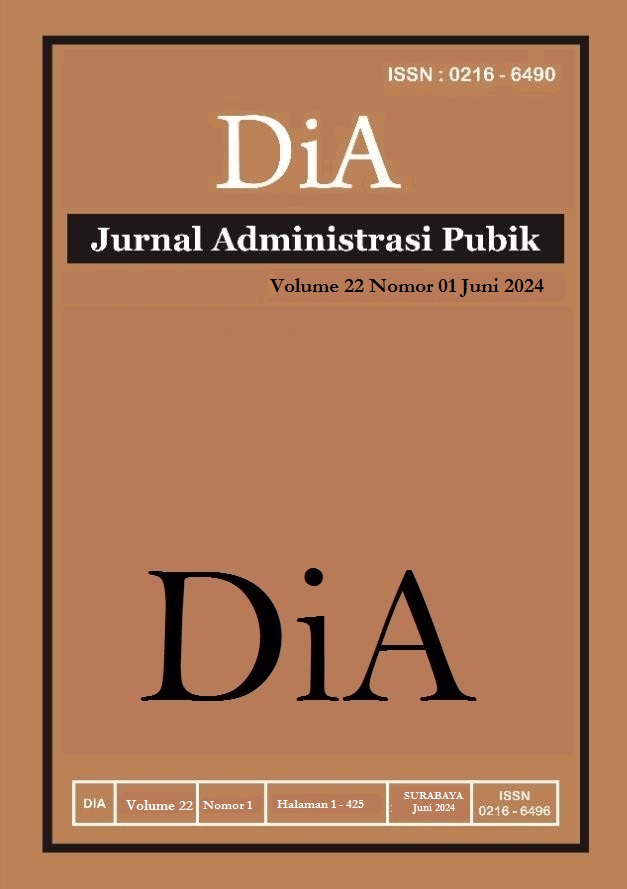ANALYSIS OF FACTORS INFLUENCING THE SUSTAINABILITY OF SMART CITIES: A CASE STUDY IN BINJAI CITY
DOI:
https://doi.org/10.30996/dia.v22i01.8932Keywords:
Innovation, Innovation Sustainability, Smart City, Binjai CityAbstract
The concept of a smart city is not only implemented in developed countries but is also being adopted in developing nations. It is not limited to large cities, as even smaller cities are starting to embrace it, including Binjai City in North Sumatra Province. However, not all smart city innovations implemented in Binjai City have been successful, and some applications are found to be unsustainable. This research aims to analyze the factors influencing the sustainability of smart city innovations in Binjai City, which was chosen as the first city in North Sumatra to implement the smart city concept in its medium-term development agenda. The research method used in this study is a mixed-method sequential exploratory approach, combining qualitative methods to formulate hypotheses and quantitative methods to analyze them. The qualitative informants consist of policymakers in Binjai City, while the quantitative respondents are civil servants involved in smart city innovations. The findings reveal three factors—political support, resources, and institutions—that have a positive and significant impact on innovation sustainability. In contrast, the other two hypotheses, community participation, and effects/impacts, are rejected as they show a negative and insignificant influence on innovation sustainability. The research results are expected to provide policy recommendations for local governments, especially in small cities with various limitations that are currently implementing smart city initiatives.
Downloads
References
Sari, D. N., & Salahuddin. (2021). Smart City Development Planning: A Study of Structured Library (Systematic Literature Review) (Vol. 19, Issue 1). Jurnal Administrasi Publik. https://jurnal.untag-sby.ac.id/index.php/dia/article/view/%235254/pdf
Shah, J., Kothari, J., & Doshi, N. (2019). A survey of smart city infrastructure via case study on New York. Procedia Computer Science, 160, 702–705. https://doi.org/10.1016/j.procs.2019.11.024
Sugiyono. (2020). Metode Penelitian Kuantitatif, Kualitatif dan Kombinasi (Mixed Methods) (2nd ed.). Alfabeta.
UNECE, & ITU. (2015). The UNECE–ITU Smart Sustainable Cities Indicators. www.unece.org/index.php?id=39566#/.
Widiyastuti, ST., MT, I., Nupikso, D., Putra, N. A., & Intanny, V. A. (2021). Smart Sustainable City Framework: Usulan Model Kota Cerdas Yang Berkelanjutan dan Integratif. Jurnal PIKOM (Penelitian Komunikasi Dan Pembangunan), 22(1), 13. https://doi.org/10.31346/jpikom.v22i1.3297
Downloads
Published
How to Cite
Issue
Section
License
The DiA journal allows authors to retain the copyright of their papers without limitation. Authors may grant publishers non-exclusive publishing rights to publish articles. Granting first publishing rights to publishers also qualifies as unlimited copyright (because there are no restrictions imposed by publishers on author copyright).






